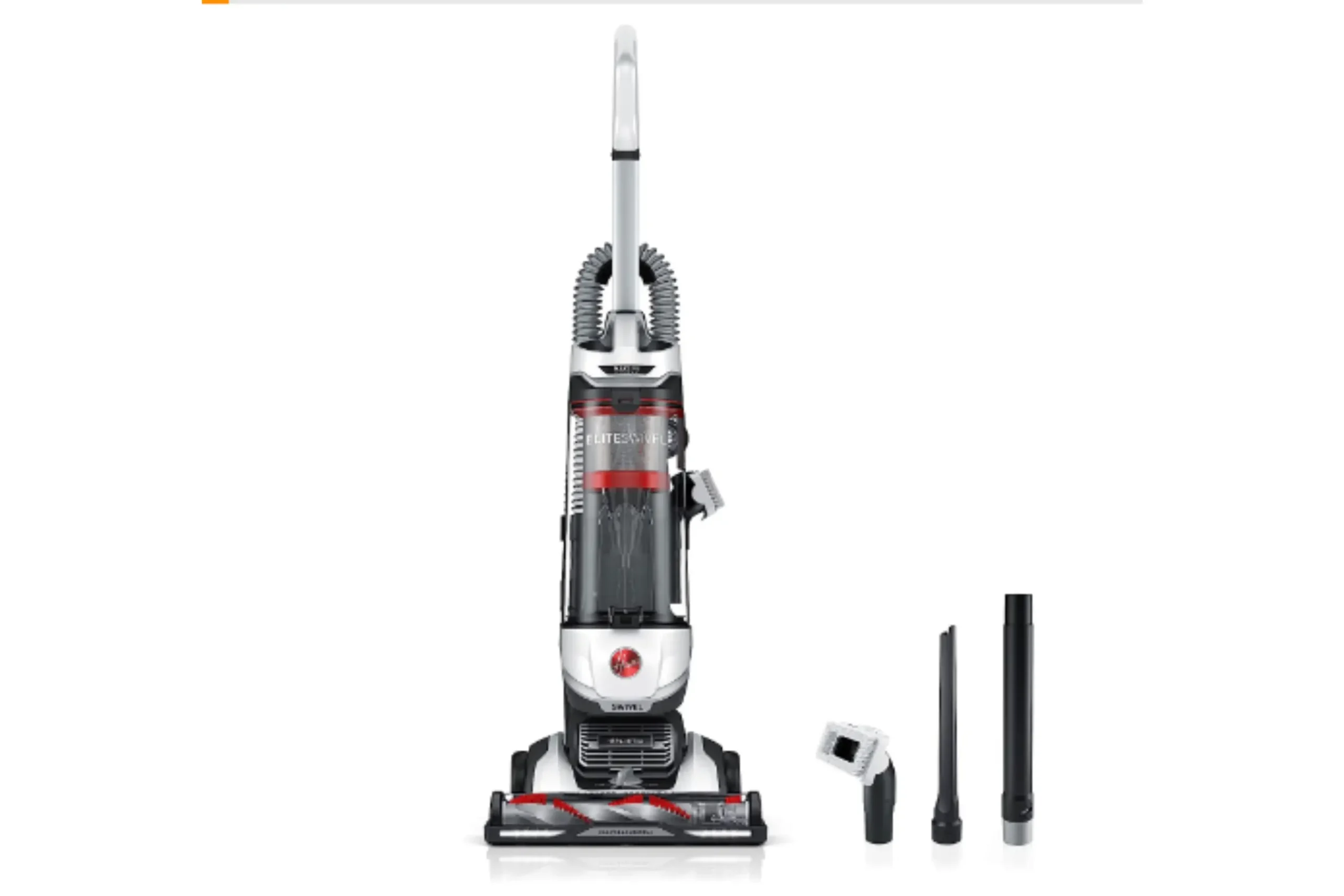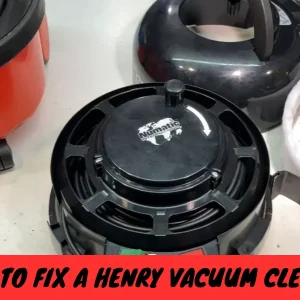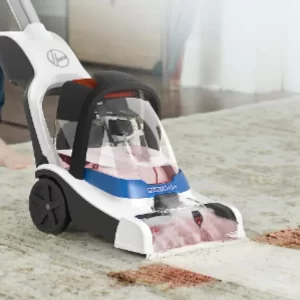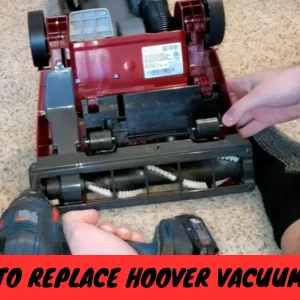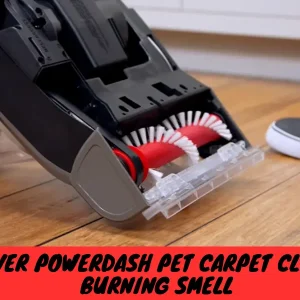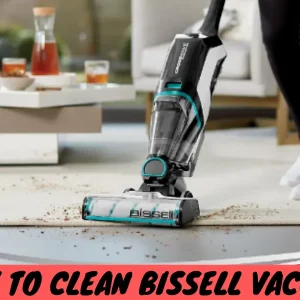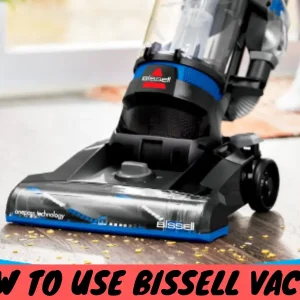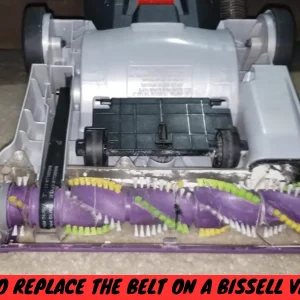“Learn how to fix a Hoover vacuum cleaner with this comprehensive guide. From common troubleshooting tips to step-by-step repairs, become an expert in maintaining your Hoover vacuum.“
“How to Fix a Hoover Vacuum Cleaner”
To Fix a hoover vacuum cleaner First, identify common problems , such as reduced suction power, strange noises, or overheating. Then, follow the step-by-step instructions to troubleshoot, clean, or replace the filter, clear a blockage in the vacuum hose, repair a damaged belt, and troubleshoot motor or suction-related problems. Regular maintenance tasks, including cleaning the filter, inspecting the brush roll, and checking for blockages, are crucial to prevent problems.
Relevant Article
- How to Clean Hoover Vacuum Cleaner
- How to Use Hoover Vacuum Cleaner
- How to Turn On Hoover Vacuum
- How to Replace Hoover Vacuum Belt
- Hoover Carpet Cleaner Not Spraying Water
- Hoover PowerDash Pet Carpet Cleaner Burning Smell
How to fix a hoover vacuum cleaner: Introduction
A Hoover vacuum cleaner can be a lifesaver in maintaining a clean and dust-free home. It is a reliable ally in the fight against crumbs, pet hair, and dirt. However, like all reliable appliances, it may experience problems at times. The great news is that you can take your time and buy a new vacuum if issues arise.
This thorough instruction will assist you in the steps to identify and fix common problems with your Hoover vacuum cleaner. So let’s start How to Fix a Hoover Vacuum Cleaner
Safety Precautions
When using electrical products like Hoover vacuum cleaners, always prioritize safety. Before you start any repair or maintenance work, remember the following safety measures:
- Unplug the Vacuum: Always start by disconnecting the power cord from your Hoover vacuum cleaner. This step is essential to avoid electrical accidents or injuries while working on it.
- Keep Children and Pets Away: Make sure small children and pets stay out of the area while working on your vacuum. This will help prevent accidents and confusion.
- Inspect the Cord: Before operating the vacuum, inspect the power cord for any damage or exposed wires. If you find a problem, fix or replace the line before using it.
- Use the Right Tools: Ensure you have the necessary tools and supplies for the repair. Using the wrong tools can cause accidents or damage to the machine.
- Don’t Overexert: If a repair seems too risky or complicated, consult a qualified specialist. Avoid attempting repairs that are beyond your ability.
- Turn Off and Unplug for Belt Replacement: Before replacing the belt, ensure the vacuum is unplugged from the wall and turned off. This eliminates the risk of accidental activation and potential damage.
Follow these safety precautions to reduce the hazards associated with working on your Hoover vacuum cleaner. This will also ensure a safe repair or maintenance process. When using electrical items, put your health and safety first.
Tools and Materials
How to fix a Hoover vacuum cleaner, For a quick and successful repair of your vacuum, gather the following tools and materials before you begin:
Tools:
- Screwdrivers:
- Needle-nose pliers:
- Wire cutters:
- Socket and wrench set:
- Multimeter:
- Tape measure:
Materials:
- Replacement parts:
- Cleaning supplies:
- Lubricant:
- Spare vacuum bags:
- Safety gear:
- Container or tray:
- Owner’s manual:
- Cleaning cloths and towels:
These tools and materials will help you efficiently address common issues with your Hoover vacuum cleaner. However, If your Hoover vacuum has a problem, then you need to know how to replace the Hoover vacuum belt. Also, you must know how to fix a Hoover vacuum cleaner.
Troubleshooting
Like other household items, Hoover vacuum cleaners can experience various problems over time. In this section, we’ll enumerate some common problems and guide how to identify their underlying causes:
Loss of Suction Power:
- Diagnosis: If your Hoover vacuum is no longer absorbing dirt as effectively as it used to, you should check your hose, filter, or brush roll for blockages.
- Troubleshooting Tips:
- Inspect the vacuum hose for obstacles and remove any you find.
- Clean or replace the vacuum filter.
- Search for debris or tangled hair in the brush roll and remove it.
Strange Noises:
- Diagnosis: Grinding or screeching noises may indicate a problem with the motor, belt, or brush roll.
- Troubleshooting Tips:
- To inspect the brush roll and belt for obstructions or damage, turn off the vacuum and disconnect it.
- If necessary, lubricate any moving parts.
- If the noise persists, consider replacing the motor or belt.
Vacuum Overheating:
- Diagnosis: If your Hoover vacuum suddenly shuts down due to overheating, a blocked filter or insufficient airflow could be the cause.
- Troubleshooting Tips:
- To ensure proper airflow, check and clean the filter.
- Check for obstructions in the vacuum airflow path.
- Avoid running the vacuum continuously for extended periods without a break.
Brush Roll Not Rotating:
- Diagnosis: Ineffective cleaning can result from a non-spinning brush roll.
- Troubleshooting Tips:
- Check the brush roll for obstructions such as dirt, hair, or tangled strings.
- Look for evidence of wear or damage on the belt that drives the brush roll and replace it if required.
Vacuum Won’t Turn On:
- Diagnosis: If the Hoover vacuum fails to turn on, this may indicate an electrical problem.
- Troubleshooting Tips:
- Ensure that the vacuum is connected to a functional outlet.
- Check the power cord for any signs of damage.
- To rule out an electrical problem, test the vacuum with a different outlet.
- If the vacuum still refuses to turn on power, it is recommended to consult a professional technician.
You can often identify the cause of common problems with your Hoover vacuum cleaner by following the troubleshooting tips outlined below. As a safety protection, always disconnect the vacuum from the power source before performing any diagnostics or repairs. If you have any problems with a repair, consult your vacuum’s manual or seek the help of a professional.
Step-by-Step Repair Guide
In this section, we will provide step-by-step instructions for solving everyday problems with your Hoover vacuum cleaner:

Cleaning or Replacing the Filter:
- Unplug the vacuum cleaner from the outlet.
- Locate the filter section on the front or side of the machine near the vacuum intake.
- Depending on your hoover model, open the removable filter compartment, which may involve pressing a button, releasing a clasp, or removing a cover.
- Remove the filter. If washable, brush off any excess dirt and wash it according to the manufacturer’s education. Make sure it is scorched before reinserting it. If it cannot be passed, replace it with a new one.
- Close the filter holder securely.
Unclogging the Vacuum Hose:
Unplug the vacuum. Disconnect the hose from the vacuum. Depending on your Hoover model, this may involve loosening or releasing a clasp.
Carefully remove any blockage from the hose using a long, flexible tool such as a straight coat hanger or plumbing snake. Twist the tool as needed to loosen and remove any obstructions. Reattach the hose to the vacuum after clearing the obstruction.
Fixing a Broken Belt:
Unplug the vacuum. Flip the vacuum over to access the brush roll and belt area. Locate the belt and brush roll. A motor spindle and brush roll are typically enclosed in a belt loop. Remove worn or damaged belts from the brush roll and spindle.
Attach a new belt to the motor spindle and the brush roll, ensuring it is positioned correctly. To verify proper belt placement, rotate the brush roll. Reassemble the base of the vacuum and secure it in place.
Looking for more such informational blog topics? Read our recent blog post on Hoover PowerDash Pet Carpet Cleaner Burning Smell also read how to fix a hoover vacuum cleaner.
Addressing Motor or Suction Problems:
Sucking and motor problems often require professional attention. If you have tried the troubleshooting methods, but the problem persists, it is recommended to seek the help of a qualified expert or contact Hoover’s Customer Care for guidance.
Checking and Replacing the Brushes:
- Unplug the vacuum.
- Turn the vacuum upside down to access the brush roll area.
- Locate the brush roll, usually secured with clips or screws.
- To remove the brush roll from its housing, separate it or release the fasteners holding it.
- Inspect the brush roll for signs of wear, damage, or excessive debris. Clean or replace it if necessary.
- Reattach the brush roll, making sure it is securely positioned and aligned.
- Put the base of the vacuum back together and fasten it securely.
For specific and detailed instructions tailored to your particular Hoover vacuum model, always refer to the owner’s manual provided with your vacuum cleaner. Additionally, prioritize safety by unplugging the vacuum before performing any repairs or maintenance. If you need clarification on a repair job, consider seeking guidance from a qualified professional.
Preventative Maintenance

To ensure that your Hoover vacuum cleaner works efficiently, it is vital to clean and maintain it regularly. Here are some essential guidelines and practices:
Regular Cleaning:
- Empty the dustbin or replace the regular vacuum bag, depending on your Hoover vacuum model. A whole bag or trash can can reduce suction power.
- Clean or replace filters as directed in your vacuum’s manual. Maintaining a clean filter is essential to maintaining strong suction.
- Clean the brush roll. Check and remove any dirt, hair, or threads tangled around the brush roll. A clean brush roll ensures effective cleaning.
- To periodically eliminate dust and stains, wipe the vacuum’s exterior with a moist cloth.
Check for Clogs:
- Regularly inspect vacuum hoses and paths for obstructions. Remove any obstacles to ensure optimal airflow.
Belt Maintenance:
- Observe the condition of the vacuum belt. If it looks stretched, worn, or damaged, replace it immediately.
Inspect the Power Cord:
- Check the power cord frequently for damage or fraying. If you detect a problem, replace the line to prevent an electrical hazard.
Store Properly:
- Store your Hoover vacuum cleaner in a dry, excellent location to avoid damage and dust buildup when not in use.
Keep User Manual Handy:
- Keep the owner’s manual for your vacuum in a convenient location for easy access. It contains important safety, maintenance, and troubleshooting information.
By following these preventative maintenance guidelines and practices, You can increase the lifespan of your Hoover vacuum cleaner and ensure it does an excellent job of cleaning your house. Additionally, regular maintenance will ultimately save you money on repairs and replacements.
Comments and Questions
If you want to contact us, this is the platform. If you wish to share your experience, have questions about your Hoover vacuum, or have successfully managed a vacuum cleaner repair, please don’t hesitate to get in touch. Feel free to share feedback, ask questions, or offer your maintenance tips for Hoover vacuums. We are here to help you.
How to Fix a Hoover Vacuum When the Brushes Are Not Moving
If the bristles on your Hoover vacuum won’t move, you can try different solutions. To start, unplug the vacuum to prevent any accidents. Next, search the inside of the brush roll for any hair or debris blocking its movement. Remove any obstructions you encounter, then clean the brush roll thoroughly. Also, check the driving belt connecting the motor to the brush roll. You may need to repair it if it is worn, slippery, or damaged. Obtain a compatible replacement belt, then carefully install it according to the manufacturer’s instructions.
After putting the brush roll and belt in place, plug in the vacuum to check if the brushes are moving. If the problem persists, it is recommended to contact Hoover’s customer support for professional repair or further assistance. This is significant because it can indicate a more severe problem with the motor or other internal parts.
How to Repair & maintain Any Hoover Vacuum Cleaner
Conclusion: how to fix a hoover vacuum cleaner
How to fix a hoover vacuum cleaner? Fixing a Hoover vacuum cleaner can be a manageable task with proper techniques and little time. Generally, the procedure involves several steps such as identifying the problem, analyzing the power source, checking the filter and dustbin, cleaning the vacuum, checking the brush roll, checking the motor and belt, inspecting the attachments and searching for leaks, etc. By following these steps, you can effectively troubleshoot and maintain your Hoover vacuum cleaner to ensure optimal performance.
FAQs
It depends on the model and usage, but generally, filters should be replaced every 3 to 6 months.
Yes, Hoover vacuums are designed for multi-surface cleaning, including hardwood floors.
Check the dustbin and filters for trapped debris. Cleaning or replacing the filters should resolve the issue.
Most dustbins and filters are washable. Check the user manual for specific instructions.
With proper maintenance, a Hoover vacuum cleaner can last for 5 to 10 years or even longer.

